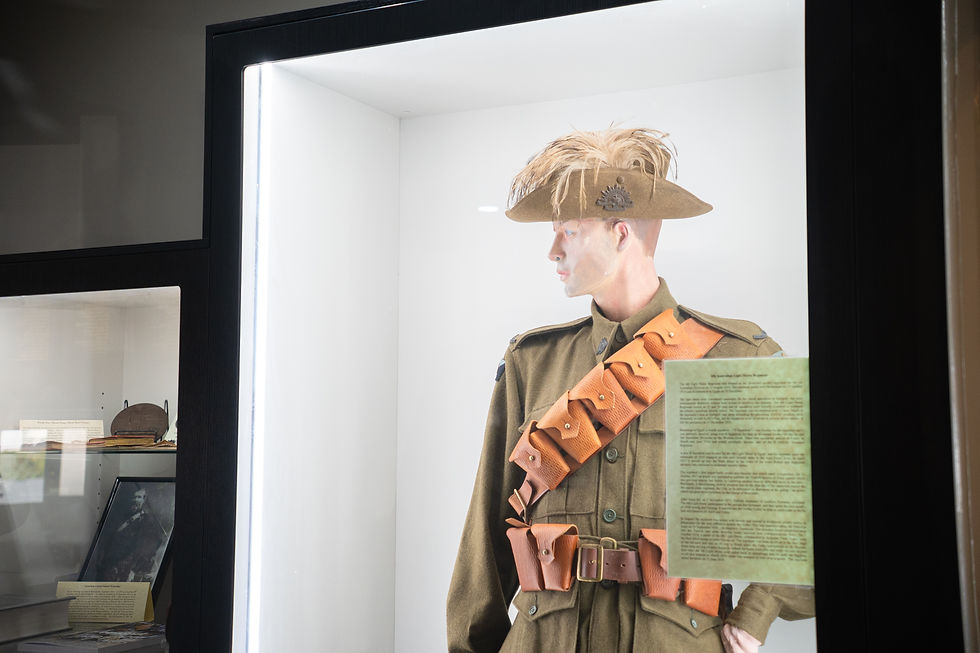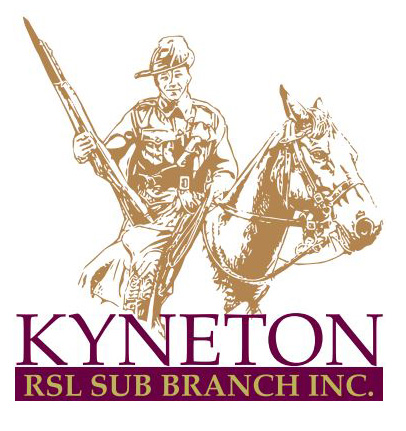
CLUB INFORMATION
The Kyneton RSL is a proud equal opportunity organisation with the highest ethical standards in all that we do. Our people will conduct themselves with honesty and integrity, treating others with respect and dignity. We will listen and reach out to our members to ensure they have the opportunity to contribute positively to our organisation's values and services.
Our Vision
Fostering connections. Bridging the gap between veterans and essential services, along with a sense of camaraderie. Uniting the broader community through exceptional experiences and a customer-first approach to hospitality.
Our Mission
To enhance the well-being of veterans and their families. To foster pride, respect, and a sense of belonging within both the veteran and wider communities by creating a warm, inclusive environment and delivering exceptional hospitality and entertainment.
Our Values
Commemoration,
Welfare,
Camaraderie
and Sustainability.
HISTORY OF THE KYNETON RSL
As injured soldiers began to return home during World War I, many different groups were set up to look after the welfare of returned soldiers as well as those still serving overseas. In late-1915 and early-1916, informal talks were held to discuss the formation of a national body of returned military personnel. On 16 June 1916, the Returned Soldiers Sailors Imperial League of Australia (R.S.S.I.L.A.) was officially formed. Almost two years later, in 1918, there was a move to set up a local Sub-Branch of the national body. As a result, the Kyneton Sub-Branch of the R.S.S.I.L.A. was formed on 19 April 1916.
The sub-branch initially occupied a building at 174 Mollison Street courtesy of the Kyneton Men’s Christian Association, who transferred their rooms to the Kyneton Sub-Branch. The new clubrooms were officially opened on 21 December 1918. The Kyneton Sub-Branch remained at this address until August 1924, when the club went into recess. It remained in recess for almost 5 years, eventually reforming on 6 July 1929. Following the club's reformation, rooms were leased at the southern end of the Kyneton Mechanics Institute. At this address, the RSL played a very active role in the community, including establishing the ambulance service in Kyneton.
Following World War II, the RSL was still leasing rooms at the Kyneton Mechanics Institute but with increasing financial pressures it became more difficult to meet the costs associated with tenancy of the rooms. The RSL approached the Army to see if they could transfer the club to the Drill Hall in Market Street.
The initial request was denied, but a later request in 1948 was successful, and the club was able to rent the hall at a substantially lower cost than the Mechanics Institute.
In 1951, the wooden shop and residence at the south-west corner of Mollison and Donnithorne Streets became available for sale and was purchased by the RSL and meetings were held in the house for several years. In 1954, the house was demolished and replaced by a permanent clubhouse. The new building was officially opened by Sir Dallas Brooks, Governor of Victoria, on 28 May 1954. This building remained the headquarters and clubrooms of the RSL in Kyneton until substantial renovations and extensions took place many years later. During the COVID lockdown in 2020, when the club was closed to the public, the opportunity was taken to carry out internal upgrades to the facilities including new furnishings.
KYNETON MOUNTED RIFLES CORP
The country Victorian town of Kyneton has had a long history of military involvement. As early as 1859, enthusiastic support for a Mounted Rifles troop was shown when 33 local citizens paraded at Barkly Square to be inspected by Captain Scott, the Melbourne-based adjutant of the Victorian Mounted Rifles. After drill they adjourned to the Royal George Hotel to elect officers, an indication of the democratic process synonymous with the volunteer movement in those days. One year later, the newly constructed Mechanics Hall was the scene for the formalities of enlistment and sanction of the Government.
At about this time other country towns in the near vicinity formed their own troops and all eventually trained together – strongholds for volunteer enlistment were at Malmsbury, Castlemaine, Maryborough, Maldon and Sandhurst (which became Bendigo). Unit names and uniforms were varied and replicated those of England at a time when the Mother Country was embroiled in disputes in the Crimea, Afghanistan, India (Mutiny) and New Zealand (Maori Wars).
The Castlemaine troops chose to call themselves dragoons; and other units became lancers, cavalry, light horse and yeomanry. It was inevitable for the economy of scale that these would all join together, and thus the detachments of Kyneton Light Horse and Kyneton Infantry Rifles came into being. These became part of the amalgamated Victorian Volunteer Light Horse and Victorian Volunteer Rifle Corps, but this changed once again when the Governor of Victoria Sir Henry Barkly approached the young Prince of Wales for permission to name all the Victorian volunteer regiments after him.
Following his approval, the newly created units came under the umbrella of the Prince of Wales Light Horse, which was later to serve Australia with considerable courage and enterprise in the years following Federation.


MEMORABILIA
The Kyneton RSL has an extensive collection of military memorabilia covering Australia’s military history. The collection includes medals, documents, diaries, weapons, photographs, albums, firearms, uniforms and personal equipment.
A full-size mannequin dressed as a Lighthorseman and a miniature of the Light Horse statue in Jennings Street are also on display. A 25-pounder field artillery piece is on display in front of the RSL.
Much of the collection has been donated to the RSL, and we are grateful to receive any item for display for future generations.
COMMITTEE MEMBERS
Fostering connections. Bridging the gap between veterans and essential services, along with a sense of camaraderie. Uniting the broader community through exceptional experiences and a customer-first approach to hospitality.











